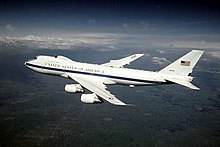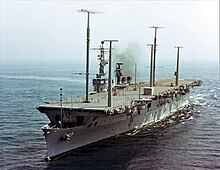Question
In: Economics
Find a Continuity Plan (COOP) on the internet for a governmental organization and provide a brief...
Solutions
Expert Solution
A continuity plan is essential to help identify critical functions and develop preventative measures to continue functions should disruption occur.
Continuity Operations(COOP) is a United States federal government initiative, required by U.S. Presidential Policy Directive 40 (PPD-40), to ensure that agencies are able to continue performance of essential functions under a broad range of circumstances. PPD-40 specifies certain requirements for continuity plan development, including the requirement that all federal executive branch departments and agencies develop an integrated, overlapping continuity capability, that supports the eight National Essential Functions (NEFs) described in the document.
FEMA provides guidance to the private sector for business continuity planning purposes.
A Continuity of Operations Plan (or Continuity of Government Plan) has been a part of U.S. government operations since President Dwight D. Eisenhower provided (via executive order) various measures designed to ensure that the government of the United States would be able to continue operating after a nuclear war.
These measures included construction of underground facilities such as "Mount Weather", a hollowed-out putatively nuclear-weapon-proof mountain in northeastern Virginia; and Raven Rock Mountain Complex near Camp David in Maryland. The public can now tour one such facility, intended to house the entire United States Congress, on the grounds of the Greenbrier Resort in White Sulphur Springs, West Virginia. (See also Project Greek Island.) Other provisions of the plans included executive orders designating certain government officials to assume Cabinet and other executive-branch positions and carry out the responsibilities of the position if the primary officeholders are killed.
There has been a formal line of succession to the presidency since 1792 (currently found in the Presidential Succession Act of 1947, 3 U.S.C. § 19). This runs from the Vice President to the Speaker of the House of Representatives, President pro tempore of the Senate, and then through the Cabinet secretaries in a sequence specified by Congress.
Continuity of government plans are not limited to the federal government. The majority of states have constitutional provisions that provide for the succession of government in the event of an "enemy attack".
The Continuity of Operations Plan involves numerous bunkers, special airplanes, and communication systems. Much of the information about them is classified; however, information on various systems has been released by the government or described to the public by reporters and writers. Since many of the details are classified, the public information may be incorrect. Also they are subject to change without public notice so this list may not reflect current plans.
During the Cold War, the United States constructed bunkers to help provide survivability to military command and government officials. Some have been decommissioned since the Cold War. The ones that are still considered to be in operation are listed here.
The United States Congress was formerly housed in the Greenbrier Bunker, but since it was discovered in the early 1990s the new location of the Congressional bunker is unknown.
- Cheyenne Mountain Complex - This underground facility is the former home of NORAD. Becoming fully operational on April 20, 1966, it is located in Colorado Springs, Colorado. Currently, the military has the goal of placing the operations center on "warm stand-by", meaning that the facility will be maintained and ready for use on short notice as necessary, but not used on a daily basis.
- In the event of an emergency deemed serious enough, NORAD and USNORTHCOM would use the bunker for C4ISTAR (command and
- control) of America's military.
- Site R (Raven Rock) - Near Waynesboro, Pennsylvania, Site R is the emergency home for the Pentagon. Vice President Cheney is reported to have stayed here after the September 11 attacks.
- Mount Weather - The Mount Weather Emergency Operations Center is a government facility located near Bluemont, Virginia. It houses operations and training facilities above ground for the Federal Emergency Management Agency (FEMA) and contains an underground facility designed to house key components of the American government in the case of nuclear war.
- Air Force One is the radio call sign of any Air Force plane the President of the United States travels on. However, the term typically refers to a Boeing VC-25A the president normally uses. While the VC-25A is equipped with numerous systems to ensure its survival, in an emergency it is recommended that the president use the National Airborne Operations Center.
-

"Nightwatch" in flight
- National Airborne Operations Center (codenamed Nightwatch) is a Boeing E-4 specially built to serve as a survivable mobile command post for the National Command Authority (NCA). Either the President or the Secretary of Defense may use it. It is also possible that the president would authorize the vice president or others to use it, depending on the circumstances.
- Looking Glass is United States Strategic Command's Airborne Command Post, designed to take over in case North American Aerospace Defense Command's Cheyenne Mountain Directorate is destroyed or incapable of communicating with strategic forces. Beginning February 3, 1961, an Air Force Looking Glass aircraft was in the air at all times 24 hours a day, 365 days a year. On July 24, 1990, Looking Glass ceased continuous airborne alert but remained on ground or airborne alert 24 hours a day. On October 1, 1998, the U.S. Navy replaced the U.S. Air Force. In addition, a battle staff now flies with the TACAMO crew.
-

The USS Wright (CC-2)
Two National Emergency Command Posts Afloat were:
- USS Northampton was converted into Command Ship CC-1 about 1962.
- USS Wright was converted into Command Ship CC-2 between 1962 and 1963 and included the National Military Command System.
-
These vessels were decommissioned in 1970.
CommunicationEdit
The Defense Communication Agency was tasked in 1963 with maintaining an active backup of all communications for any event that could disrupt communications and the management of command and control communications systems as the National Communications System. This mission was partially transferred to Defense Information Systems Agency in charge of supporting command, control, communications, and information systems for the military in the 1990s and would support the National Command Authority. These functions were later transferred to Joint Forces Command and STRATCOM but the backup contingency systems continue to operate. It is assumed that the various bunkers and airplanes have been equipped with special communication equipment to survive a catastrophe.
Related Solutions
Give example of a Continuity of operation Plan (COOP) in case of emergencies and disasters on...
Do quick internet research and find a case that deals with foreclosure. Provide a brief summary...
Product made from a global organization? Provide a brief description of the product and the organization...
COOP work term report ideas or topics and brief summary for a student working in a...
Use the internet to review a government's CAFR. Examine the governmental fund financial statements, the governmental...
Search the Internet and find and discuss a business or organization that has a data warehouse...
Perform an Internet search to find a specific diversity policy for an organization and answer the...
Why is it important for organizations to have a business continuity plan in place?
What is the relation between Continuity Care Records and Continuity Care Documents? (Please provide reference source...
Question #4: A Bond is a contract between the issuing organization (corporation or governmental organization) and...
- Write at least one paragraph with a minimum of 100 words on the Tang Dynasty period...
- C++ How can I print out the subtrees in my self-balancing tree? What I would like...
- Describe how the Rational User Process can accommodate agile process. Specify in what phases and what...
- You are the lead auditor performing a walkthrough of the bank reconciliation performed by the company...
- 5. In recent years, about twenty states have passed so-called medical marijuana laws. Typically, these laws...
- What roles does HRM perform relative to each international business strategy of ethnocentric, geocentric and polycentric...
- Explain why the client congestion window(cwnd) size varies differently for different load conditions. In context to...
 Rahul Sunny answered 3 years ago
Rahul Sunny answered 3 years ago